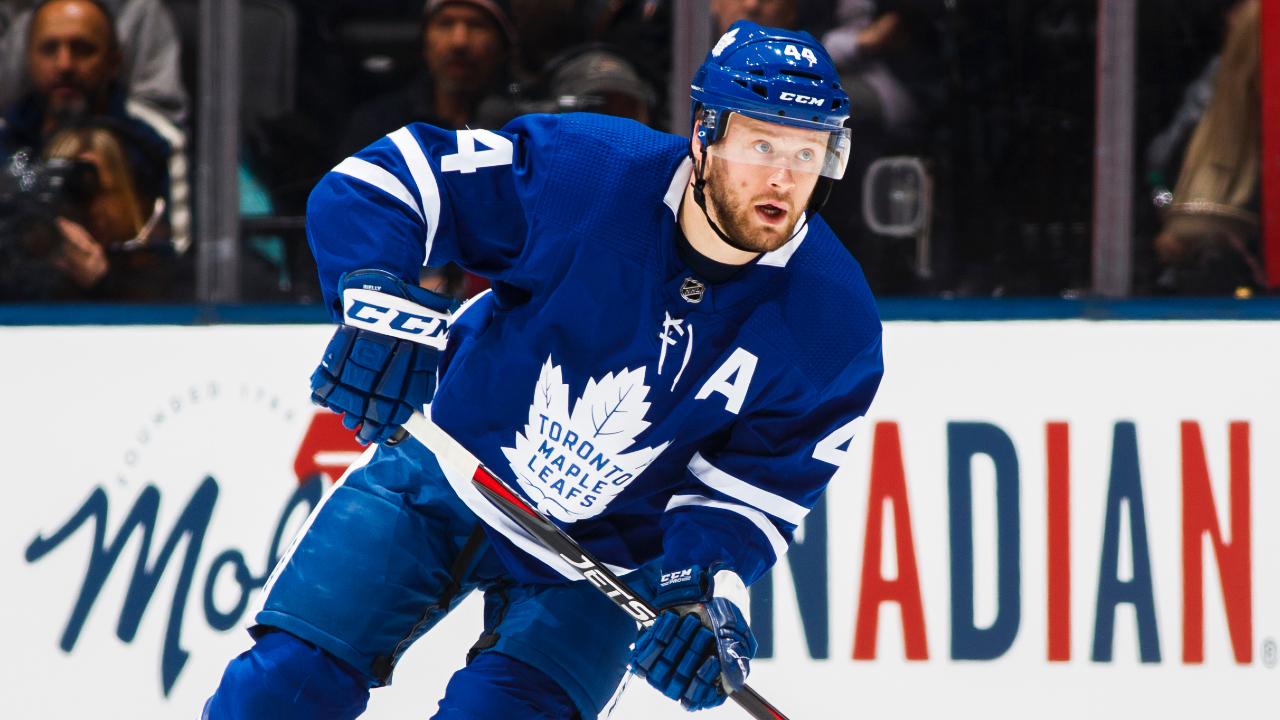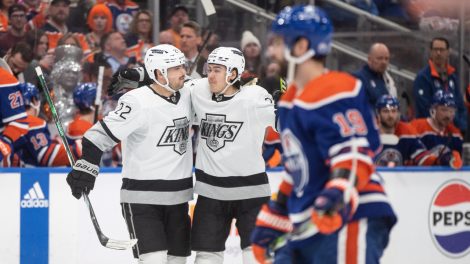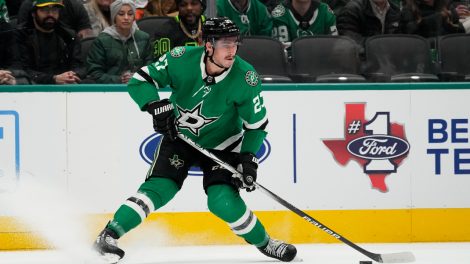We’ve looked at the best 5-vs-5 shooters in the NHL, and the players who facilitate the shooters by making things happen in the best playmakers, but what about the players who get things moving into the offensive department in the first place?
There’s not much that anyone can get done offensively when the puck is stuck in their own end, which is why transition play is such a vital ingredient in the mix that creates goals. One of the biggest hurdles to creating a smooth transition is exiting the defensive zone, and the players who have the most impact there are defencemen.
Coming into this season we looked at which defencemen contributed the most to their teams’ breakouts out of the defensive zone using data from the 2018-19 season, and no one even held a candle to Erik Karlsson.
Karlsson has faced a fair amount of criticism for how his game has deteriorated in San Jose, mostly due to the cumulative injuries he’s suffered over the last few seasons. However despite his offence, specifically his goal scoring, no longer being easily the best in the league, there was strong evidence that Karlsson was still an all-world player due to his ability to move the puck.
Like with forwards, we’ll only be looking at defencemen who have played 500 or more minutes at 5-vs-5, and we’ll pro-rate their involvement per 20 minutes of ice time.
Concerning breakouts, to get a general idea of how much a player is doing, we’ll combine all forms of exiting the defensive zone; outlet passes (forward passes from the defensive zone to a recipient within a team’s half of the ice), stretch passes (forward passes from the defensive zone to a recipient beyond the centre ice red line), carry outs (skating the puck out of the defensive zone), and dump outs.
It’s also important that a defenceman isn’t just spamming poor pass or dump out attempts and succeeding often, but turning the puck over carelessly, so we’ll contrast the total breakouts each defenceman completes with their turnover rate on all defensive zone plays relative to their teammates.
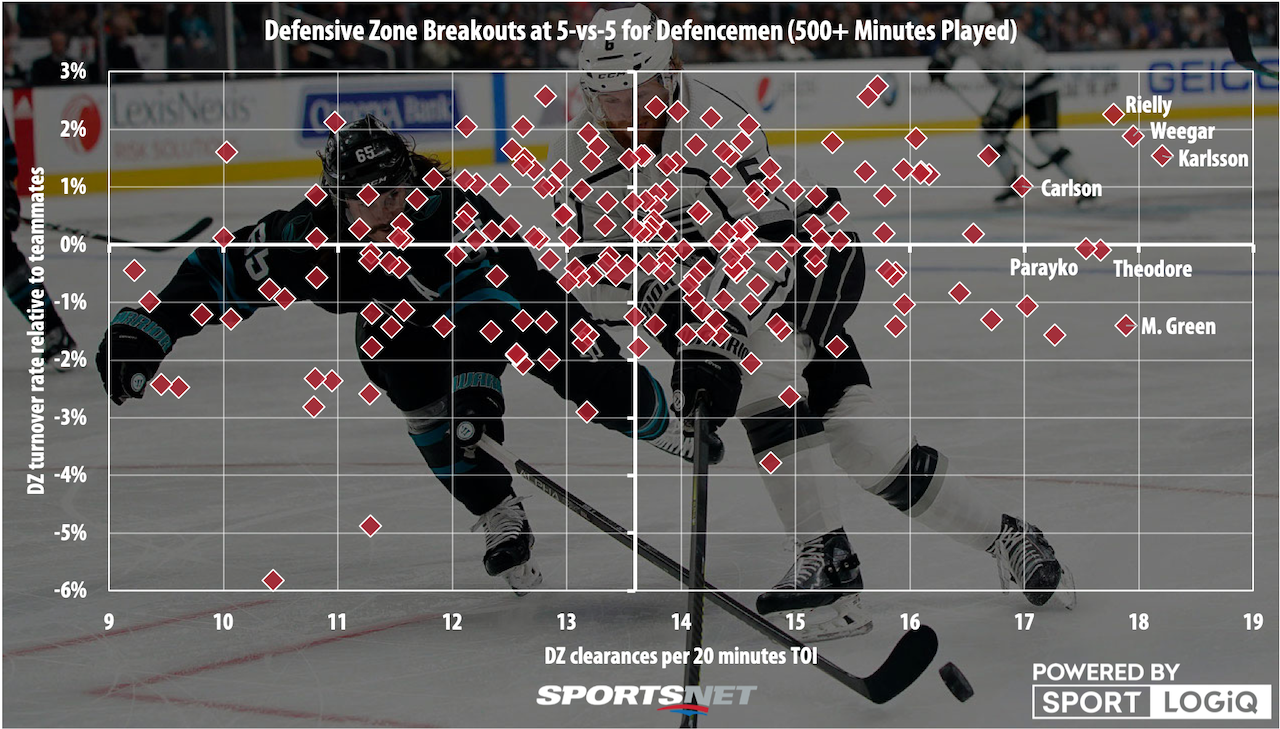
As usual with the scatter plots, the axes are set at league-average values, and the relative turnover rates are inverted so that positive numbers mean better than team average.
The gap between Karlsson and his peers that existed last season is all but gone, but the soon-to-be 30-year-old defenceman remains the single most active participant in defensive-zone clearances per minute played in the NHL.
Most of the names at the top of the pack make sense, and then there’s MacKenzie Weegar, who has been unbelievably crucial for the Florida Panthers’ transition game. Mike Green is also a bit of a surprise, though it makes sense that on a really weak defence in Detroit he was pulling out all the stops to move the puck, and it hurt his turnover numbers.
Morgan Rielly and John Carlson have provided their teams with incredible outlet options while maintaining very low turnover rates, which helps Carlson’s case in the Norris debate as more than just a part of the Washington Capitals’ vaunted offence; he’s a big facilitator in creating it in the first place.
For Rielly, it’s easy to see why the Toronto Maple Leafs have at times struggled to look as dynamic offensively without him in the lineup, he’s so important to their transition game.
Colton Parayko and Shea Theodore round out the top group, both at about team average in turnover rate while pushing play in the right direction.
Now that we have a general idea of who the big contributors are, we can go into the details and see how each defenceman is pushing the puck in the right direction.
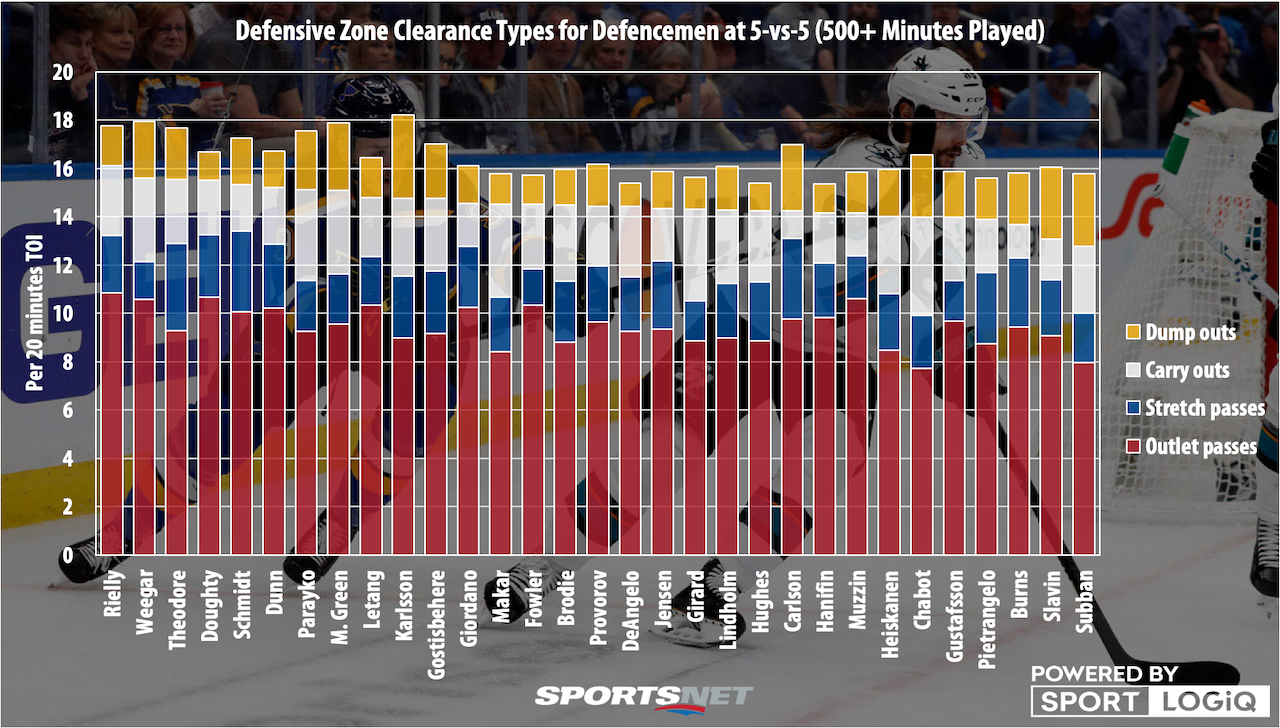
Ordered by defensive-zone exits where the team maintains control of the puck, we can look at how the top-31 defencemen in the league at breakouts engineer their teams’ transition play. Last season, Karlsson was nearly two controlled exits better than anyone else per 20 minutes of ice time, but this year he’s fallen all the way back to 10th.
The new league leader is Rielly, who was 12th last season, with a big increase in skating the puck out of the defensive zone and in short outlet passes. I have a feeling that part of the change that has benefited Rielly is Sheldon Keefe leaning less heavily on stretch passes, which gives Rielly closer targets to pass to, increasing his ability to exit the zone.
Behind Rielly is Weegar again, who has really come out of nowhere. Weegar has skated the puck out of danger consistently this season, and is one of the league’s leaders in completed outlet passes.
You can also see some team trends in here, with Shea Theodore and Nate Schmidt both leaning into the speed of the Vegas Golden Knights with more stretch passes, or Cale Makar and Sam Girard leaning into their skating as the Colorado Avalanche move up the ice as a unit.
What can be missed a little bit here, though, is how often are these players in the defensive zone to begin with? Surely you would complete more zone exits if you’re in the defensive zone more often, so what happens if we control for total defensive-zone involvement and see what percentage of each defenceman’s plays in the defensive zone directly clear the zone? Let’s contrast that with their raw turnover rate to make sure the best players are too messy.
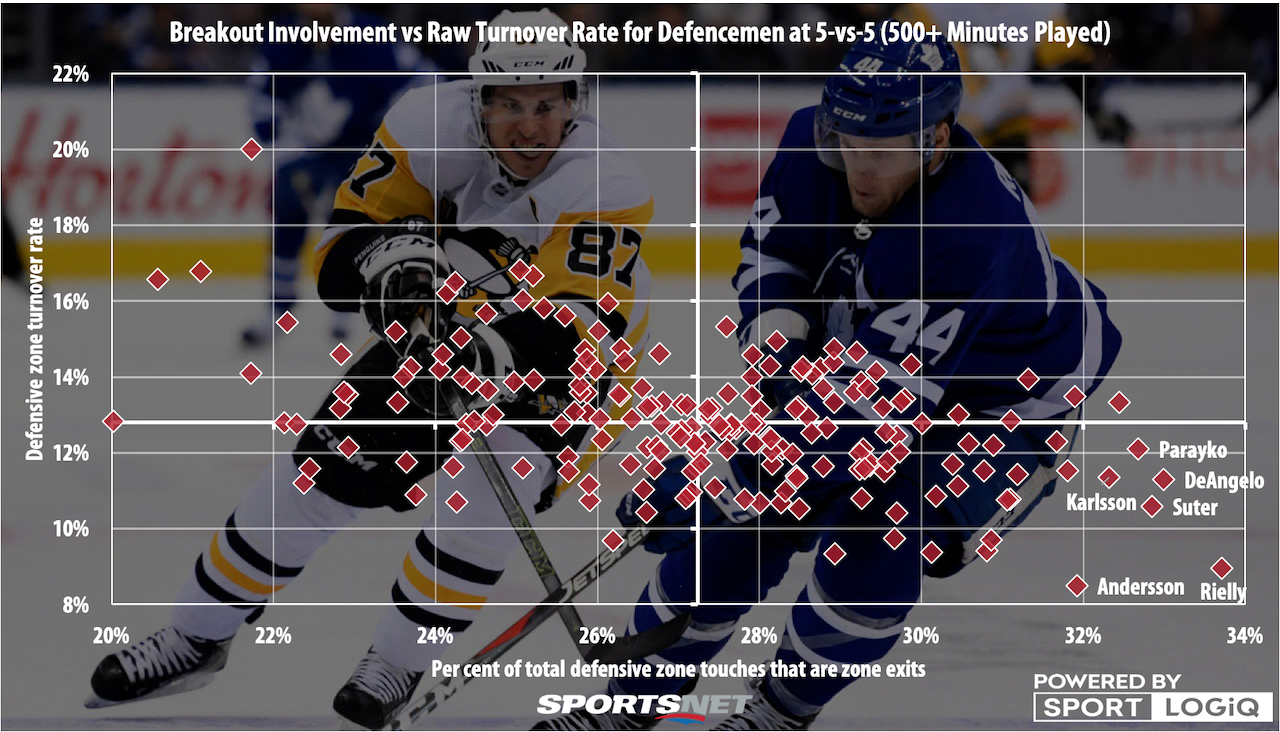
Once again, Rielly pulls out from the pack, with one of the lowest turnover rates in the league and the highest proportion of his plays in the defensive zone becoming a zone exit off of his stick. Behind him, some familiar names pop up in Parayko and Karlsson once more, while Ryan Suter appears despite not being in the top-31 players in overall exits, because, when he’s on the ice, the Minnesota Wild don’t spend much time in their own zone. You have to give it to Suter that he’s still so efficient at 35-years-old.
Lesser known names like Rasmus Andersson on the Flames and Anthony DeAngelo on the Rangers look impressive as well, but this year at least, no one is touching Rielly’s combination of involvement and efficiency with the puck.
There’s a lot to be desired in Rielly’s game without the puck, but with it on his stick, there’s very few defencemen who have a bigger impact in every zone. He may not be a great one-on-one defenceman, but his ability to exit the zone has a big defensive impact.
[relatedlinks]

